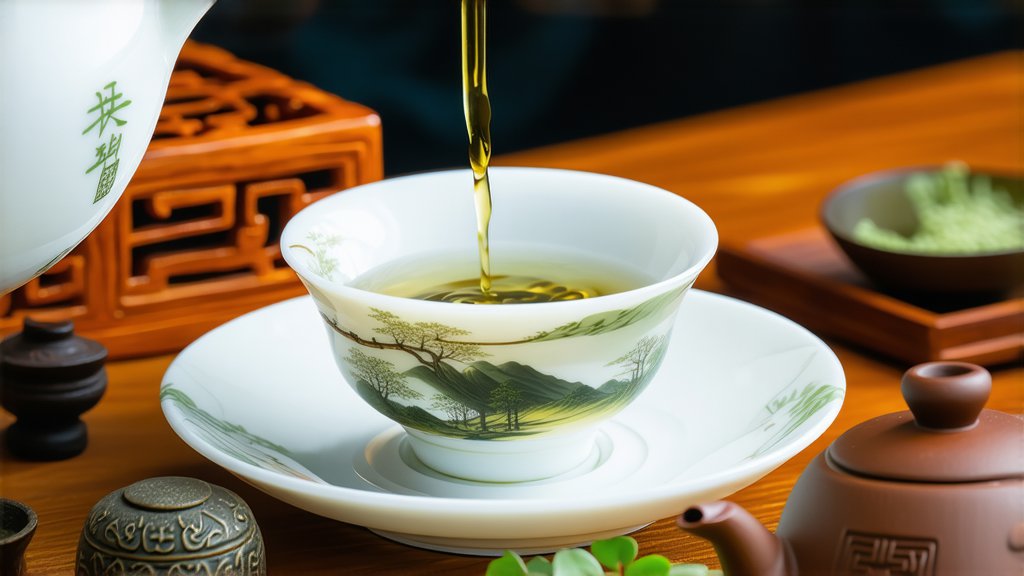
Bai Mu Dan, a name that translates to "White Peony," is one of the most revered varieties within the realm of Chinese white teas. Originating from the Fujian Province, this exquisite tea has a history as rich and nuanced as its flavor profile. In this comprehensive exploration, we will delve into the historical background, varieties, meticulous craftsmanship involved in its production, and the art of appreciating its unique taste.
Historical Background
The origins of Bai Mu Dan can be traced back to the early Qing Dynasty, around the 1790s, making it a relatively young addition to the vast tapestry of Chinese tea culture, which spans over 4,000 years. It was during this period that tea masters in the Fuding area of Fujian Province began experimenting with new methods of tea cultivation and processing. Their innovative approaches led to the development of what would become Bai Mu Dan, distinguishing itself from other white teas primarily through its use of more mature leaves and buds.
Varieties of Bai Mu Dan
While Bai Mu Dan is often considered a singular entity, there are subtle variations based on the specific terroir, climate conditions, and the expertise of the tea master. The two primary types are:
-
Gong Mei Bai Mu Dan (Tribute Eyebrow White Peony): This premium variety features downy buds resembling eyebrows, hence the name. It is harvested earlier in the season and is known for its exceptionally delicate flavor and aroma.
-
Xu Mei Bai Mu Dan (Continuous Picking White Peony): Harvested later in the season, this type includes both buds and leaves, resulting in a fuller body and a slightly more robust flavor compared to Gong Mei.
Crafting Bai Mu Dan: A Labor of Love
The magic of Bai Mu Dan lies not only in its unique flavor but also in the minimal processing it undergoes, preserving its natural essence. Here's an overview of the traditional steps involved:
-
Withering: Freshly picked leaves and buds are spread thinly on bamboo mats under the sun or in well-ventilated rooms, allowing them to lose moisture gradually. This process can take up to three days, depending on weather conditions.
-
Fixation: Once the leaves have softened and lost approximately 30% of their moisture content, they are lightly stirred or baked to halt oxidation. This step is crucial in maintaining the tea's pale color and fresh aroma.
-
Shaping: The fixed leaves are gently rolled to form their characteristic shape, resembling slender needles or twisted curls, depending on the desired aesthetic.
-
Drying: Finally, the shaped leaves undergo a final drying phase to reduce moisture content further, ensuring longevity without compromising flavor.
The Art of Tasting Bai Mu Dan
Appreciating Bai Mu Dan goes beyond mere consumption; it is an experience that engages all senses. Here’s how to fully immerse yourself in this ancient tea tradition:
-
Preparation: Use water just off the boil (around 85°C/185°F) to avoid scalding the delicate leaves. Rinse your teapot and cups with hot water to warm them up.
-
Infusion: Place about 3-5 grams of Bai Mu Dan per 150ml of water. Steep for 1-2 minutes for the first infusion, gradually increasing steeping time for subsequent infusions. Bai Mu Dan can be resteeped multiple times, revealing different layers of flavor with each brew.
-
Observation: Admire the pale yellow liquor, a testament to the tea's purity and gentle processing. Note the subtle changes in color with each infusion.
-
Aroma: Before taking a sip, inhale deeply to capture the tea's floral and fruity notes, often described as having hints of orchid, melon, and honeysuckle.
-
Flavor: Sip slowly, allowing the tea to coat your palate. Bai Mu Dan offers a harmonious balance of sweetness and slight astringency, with a lingering aftertaste that evokes the fresh mountain air of Fujian.
-
Texture: Feel the silky smoothness of the tea as it glides over your tongue, a hallmark of high-quality Bai Mu Dan.
In conclusion, Bai Mu Dan stands as a testament to the artistry and dedication inherent in Chinese tea culture. Its journey from ancient times to modern tea tables is a story of innovation, respect for nature, and an unwavering commitment to quality. As you embark on your own exploration of this enigmatic tea, may you find not just a beverage but a gateway to understanding a profound aspect of human heritage.